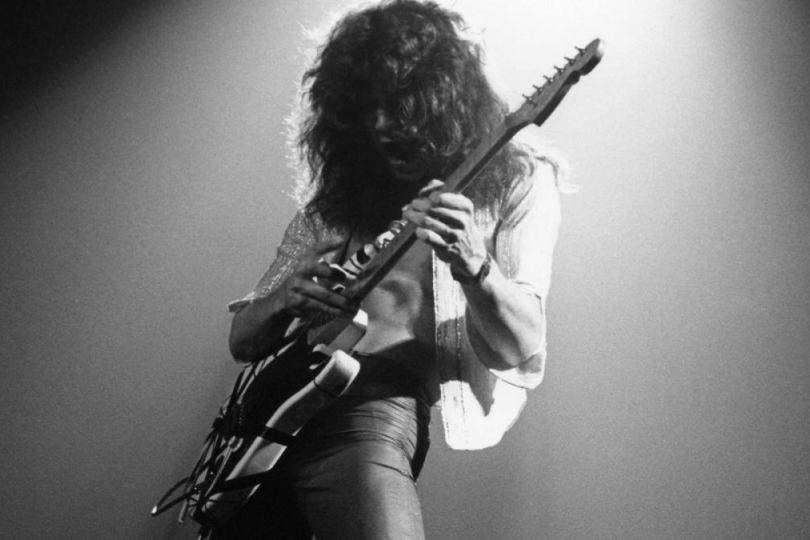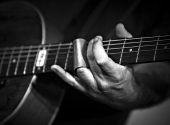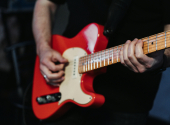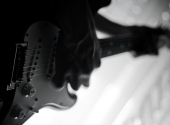
(Un)usual Guitar Techniques #7: Tapping
In today's part of the guitar techniques series, we look at what could perhaps be seen, with a bit of exaggeration, as guitarists' answer to bassists' slapping. Or maybe it is a response to double drum pedals? We'll find out who made this technique a common part of many rock and metal solos today, and how to use it if you're not a fan of fast playing. We'll talk about tapping, sometimes falsely called "hammering". And since this technique is all about tempo, get ready for a really fast ride.
Tapping usually appears in the most ecstatic and fastest parts of rock or metal solos, so when listening, it's not easy to decipher more than furiously fast runs of notes or chords arpeggios. It's not for nothing that solo players who have taken a liking to this technique are called "shredders", just like the Shredder in the Teenage Mutant Ninja Turtles. In this case, they shred the strings. I would even guess, however, that more broken strings will be caused by the string bending we discussed in the last episode. So let's work with a more fitting definition of shredding: supposedly it means playing fast like a Ferrari, and tapping is an essential component of that drive.
Stripping a Ferrari down to the studs
But first, we should slow down a bit and look at what this technique actually involves. Just as drummers achieve twice the speed of a kick drum when playing with a double pedal at the same time because they can engage both feet, when tapping, guitarists use both hands not in the usual way, that is, the right hand strumming the string while the left one presses down on the string at the appropriate fret, but by both hands making tone together. Not by strumming, but by tapping the string.
If you want to try it, put the pick down and try to press the string as hard as you can against the fretboard. You'll do better with the left hand first, the move is identical to playing a scale, just with more punch. Later you can add the right hand, I would recommend the middle finger to start with. For one thing, it has the most power, and most importantly, you can play tapping this way even though your thumb and index finger are still holding the pick.
On the internet, you will certainly find different ways to practice tapping, but they will have one thing in common. Start slowly and concentrate on each note so that it sounds as it should. I practised tapping on the same note first, which is a great test of tempo accuracy. Because once you're just a little off, the fingers of your left and right hand get tangled and bump into each other. So start your Ferrari slowly and gradually build up the tempo. When you're able to play one note so fast that the individual strokes on the string almost blend and your fingers don't get tangled, you're almost there and can move on to more complex scales.
Looking into the past
Speed has always fascinated people, and guitarists are no exception. Ever since the advent of the electric guitar, some have been looking for ways to play faster and more complex solos. In the 1960s, it was more about pioneers exploring the sonic possibilities of the instrument and finding new ways to play the tone – like Frank Zappa, who played the tapping by the edge of his pick in the solo of "Inca Roads".
But they were always experiments – until Eddie Van Halen's iconic debut, which included a long tapping passage in the "Eruption" that stunned the guitar world and almost overnight became a mandatory part of all rock and metal solos. The phenomenon of shredding was born, which some guitarists love while others tend to hate.
Speed isn't everything
Eddie Van Halen's legacy was continued in the 80s and 90s by other guitarists who took the possibilities of tapping even further: Joe Satriani, Steve Vai, Paul Gilbert and Jeff Watson, who even played with four fingers of his right hand. The initial enthusiasm for pure high speed was replaced by making unusual harmonies.
Tapping is not just about speed. It also brings new melodic possibilities, as it allows you to connect much more distant parts of the fretboard than you could cover with just one hand. Thus, solos in which guitarists use tapping can not only be furiously fast, but they often use unusual scales or arpeggios and can be harmonically very sophisticated. A case in point is Steve Vai's "Building The Church", whose tapping solo and its composition are discussed by the composer himself in the following video.
A quiet ride through the countryside
The fact that tapping allows you to create melodies that you wouldn't normally play with a pick is worth repeating. Because here you can park your Ferrari and swap it for a more comfortable, slower car that's easier to drive. For those who don't like wild driving and super-fast solos, tapping is a great tool to create very nice melodies going over several octaves or chord progressions, for example. But here we're getting at the legato technique, which we'll talk about again next time.
And one more essential piece of information at the end, you can practice tapping together with your bass player... So have fun!
If you have found an error or typo in the article, please let us know by e-mail info@insounder.org.





